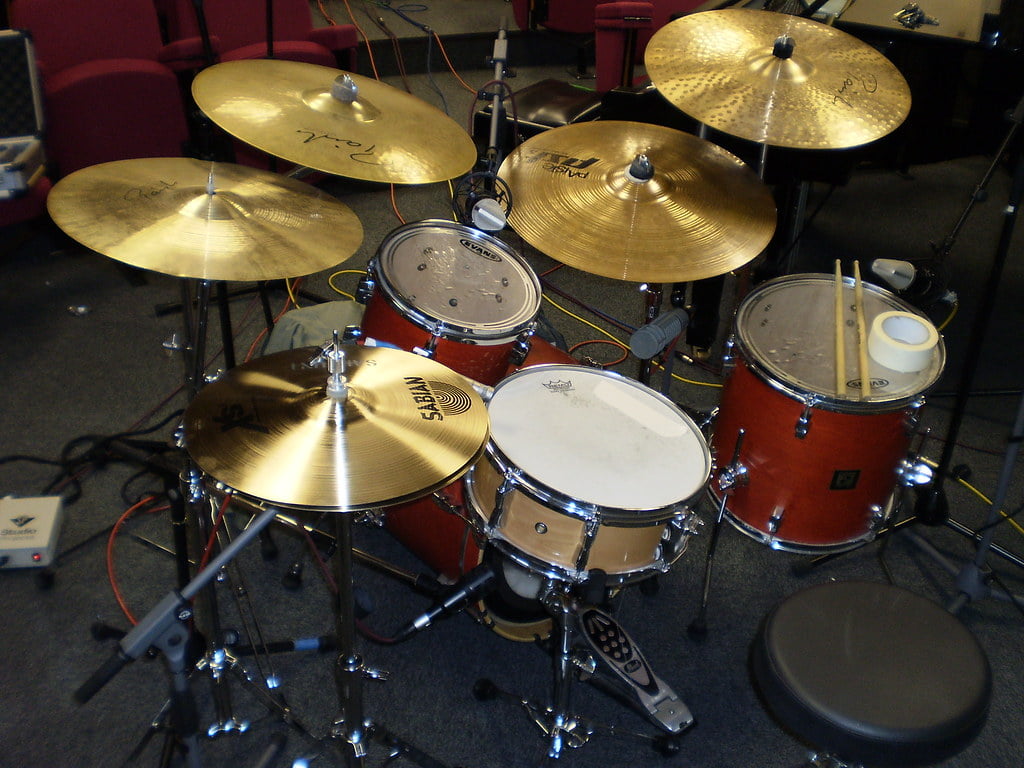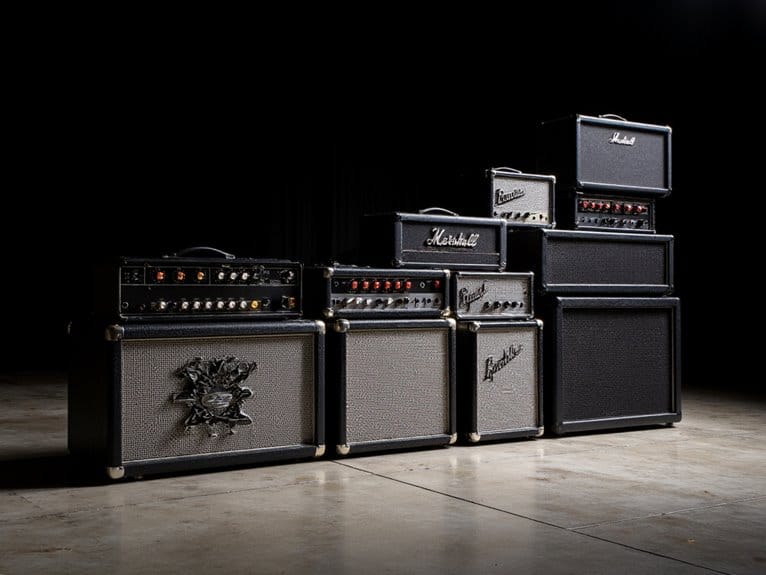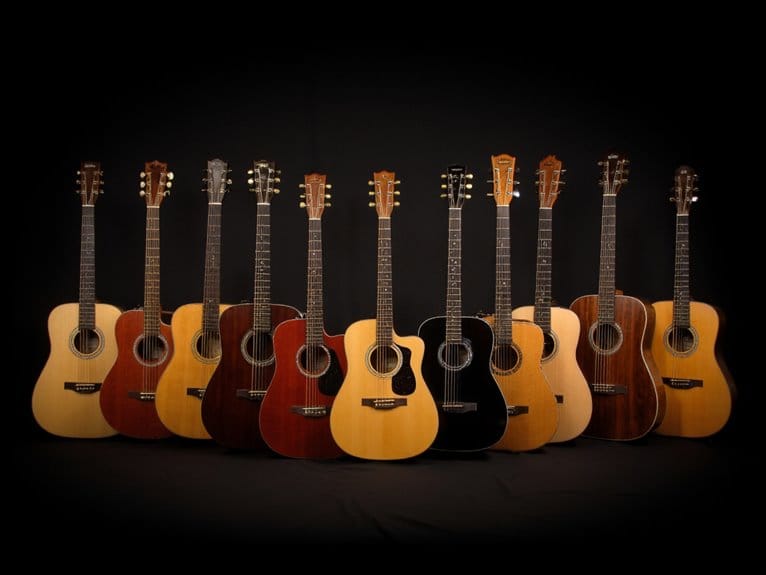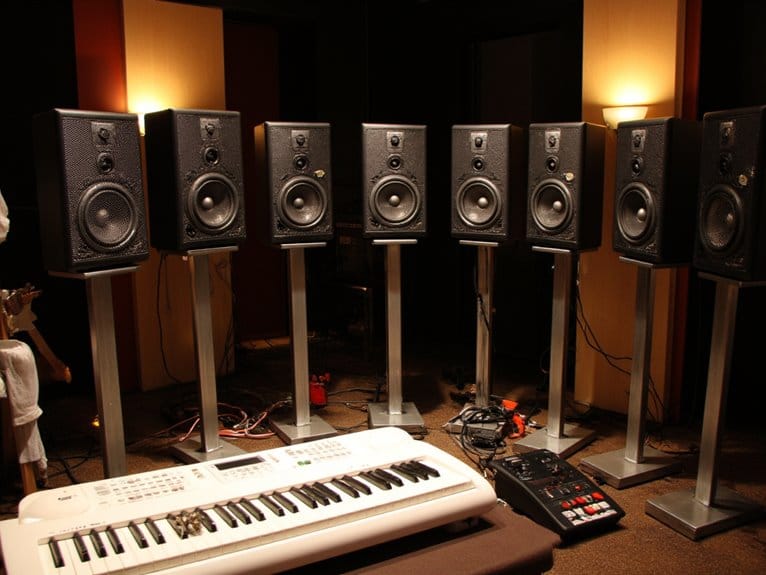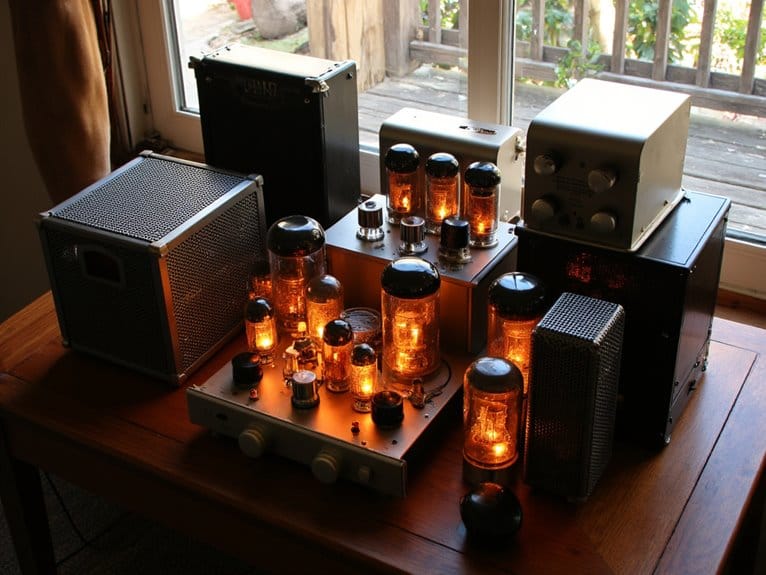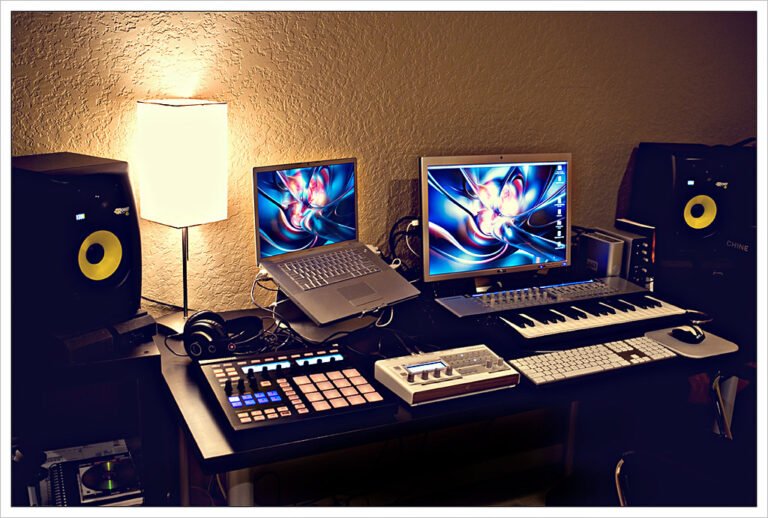Recording Drum Kit Microphones: Best Mic Options
When I record drum kit microphones, I make sure to choose the best mic options to capture the rich and detailed sound of each drum component. For the kick drum, I opt for the Sennheiser e602-II for a focused low end or the AKG D112 MKII for added punch. Snare drums sound best with the versatile Shure SM57 or for a different tone, the EV RE10 works wonders. Hi-hats can be captured beautifully with the Shure SM81 or the Neumann KM 184 for clarity. As for tom drums, the Miktek PM11 and Lewitt DTP 340 TT are solid choices focusing on sound quality and bleed reduction. Overhead mics play a critical role; I prefer the Neumann U67 Reissue for premium quality or the Audio Technica AT4033 for affordability. Room mics, like the Neumann U 87 Ai, add depth to the overall sound. Specialized mics like the Coles 4038 or AEA R88 mkII can further enhance the drum recording experience. Making the right microphone choices is key to a stellar drum recording setup. In addition to selecting the appropriate microphones, I often find that incorporating midi drums can complement live recordings effectively, especially when it comes to hybrid setups. This allows for precise layering and editing, ensuring that the final mix achieves both punch and clarity. Embracing technology alongside traditional recording techniques can elevate the overall sound significantly.
We are supported by our audience. When you purchase through links on our site, we may earn an affiliate commission, at no extra cost for you. Learn more.
Kick Drum Mic Options
When considering kick drum mic options for recording, a variety of models cater to different budgets and desired sound characteristics. The Sennheiser e602-II, priced at 149.95, stands out as a solid option for capturing the **low-end frequencies** of a kick drum. Its frequency response and robust build make it a reliable choice for recording kick drums in various genres. Another popular option is the **AKG D112 MKII**, priced at 199, known for its quality sound reproduction and ability to handle high SPLs, making it suitable for loud kick drum recordings. Moving into the higher end of the spectrum, the AEA A440, priced at $5,799, offers unparalleled audio quality and detail, ideal for professional studios aiming for exceptional kick drum recordings.
For specific miking techniques, the Neumann FET47 and AKG 414 are recommended for miking the outside of a kick drum to capture the resonance and depth of the instrument. On the other hand, the Audio Technica 4033 provides an affordable option for capturing the attack and punch of the kick drum from the front head. Each of these mics caters to different aspects of kick drum sound, allowing for versatility in achieving the desired sound in a recording setup.
Snare Drum Mic Options
Among the array of microphone options available for capturing the nuances of a snare drum, the Shure SM57 stands out as a classic choice known for its versatility and durability. When contemplating mic options for a snare drum, it’s crucial to ponder about the sound characteristics you want to achieve. Here are some top mic options to ponder about:
- Shure SM57: Renowned for its versatility, the SM57 is a go-to choice for many engineers due to its ability to handle high sound pressure levels and its durability in various recording environments.
- EV RE10: This microphone offers a unique sound profile compared to the popular SM57, providing a different sonic coloration that can help your snare drum cut through the mix.
- Lewitt MTP 440 DM: A reliable alternative to the traditional SM57, the MTP 440 DM offers a balanced frequency response and robust build quality, making it a solid option for capturing the nuances of a snare drum.
- Neumann KM84 and AKG 451: If you’re looking to explore condenser mics for your snare drum, these options are known for their ability to capture the detailed nuances and transient response of the snare drum sound, adding clarity and definition to your recordings.
When selecting a microphone for your snare drum, ponder about the sonic characteristics you desire, the recording environment, and the overall sound of your drum kit to choose the mic that best complements your setup.
Hi-Hat Mic Options
When considering hi-hat mic options, mic placement techniques play an essential role in capturing the nuances of this cymbal. Recommended microphone models such as the Shure SM81, AKG C451 B, Neumann KM 184, and Audio-Technica AT4051b are popular choices for hi-hat recording due to their unique sonic characteristics. Experimenting with placement and microphone selection can help achieve the desired hi-hat sound for a well-balanced drum mix.
Mic Placement Techniques
For ideal hi-hat sound capture in recording drum kit microphones, consider positioning the mic above the top cymbal between the bell and edge. When placing a hi-hat mic, it’s important to find the sweet spot that captures the nuances of the cymbal without interference. Here are some key points to remember:
- Optimal Placement: Position the mic above the top cymbal between the bell and edge for best results.
- Avoid Interference: Adjust the mic placement to minimize interference from other drum kit elements.
- Tonal Control: Experiment with different positions to control the attack, sizzle, and overall tone of the hi-hat.
- Clarity and Definition: Proper hi-hat mic placement influences the clarity and definition of the hi-hat sound within the drum mix.
Recommended Microphone Models
When considering microphone options for capturing hi-hat detail and brightness, drummers frequently choose the popular Shure SM81 for its exceptional performance in recording settings. The AKG C451 B offers a clear and precise sound reproduction, making it a great choice for hi-hat miking. Neumann KM 184 is known for its transparency and accuracy, providing an ideal solution for capturing hi-hat nuances. Additionally, the Audio-Technica AT4051b delivers a smooth and balanced sound, enhancing the overall hi-hat recording experience. Placing the microphone above the top cymbal between the bell and edge guarantees excellent hi-hat sound capture, allowing these high-quality microphones to showcase the intricacies of the hi-hat performance with clarity and precision.
Tom Mic Options
To optimize the recording of tom drums in a drum kit setup, selecting microphone options like the Miktek PM11 or the Lewitt DTP 340 TT can greatly enhance sound quality and minimize unwanted cymbal bleed.
- Consider Tom Configuration: When choosing tom mics, it’s important to factor in the number of toms in the drum kit. Different configurations may necessitate different mic setups to capture each tom effectively.
- Focus on Sound Quality: Both the Miktek PM11 and the Lewitt DTP 340 TT are renowned for their exceptional sound quality. These mics can capture the nuances of tom drums accurately, ensuring a rich and dynamic sound in recordings.
- Minimize Cymbal Bleed: Opt for mics that provide a focused sound and help reduce cymbal bleed. Cymbal bleed can muddy the sound of tom drums in recordings, so selecting mics that offer good off-axis rejection is essential.
- Durability Matters: Given the nature of drumming and live performances, durability is key when selecting tom mics. Both the Miktek PM11 and the Lewitt DTP 340 TT are well-known for their robust build quality, making them reliable choices for capturing tom drums in various settings.
Overhead Mic Options
Considering the importance of capturing the overall sound quality of a drum kit, exploring overhead microphone options becomes imperative for achieving a well-rounded recording. Overhead mics play a vital role in capturing the full essence of the drum kit, providing a sense of space, depth, and detail to the overall sound. The Neumann U67 Reissue stands out as a premium choice in this category, offering exceptional sensitivity and detail. Priced at $7,299 each, this mic is a top-tier option for those seeking the utmost quality in their recordings.
For those looking for a more affordable yet reliable overhead mic, the Audio Technica AT4033 is a solid choice at 399 each. While it may not reach the same premium quality as the Neumann U67 Reissue, the AT4033 still provides a good balance of affordability and performance, making it a practical option for many recording setups. On the other end of the spectrum, the Royer SF-24V offers a **high-end solution** for capturing overhead sounds, priced at 5,795. This mic excels in delivering pristine audio quality and is a favorite among professionals seeking top-notch results.
Selecting the right overhead mic is crucial as it impacts the drum kit’s overall sound quality. Whether opting for a premium, affordable, or high-end overhead mic, the choice should align with the desired recording outcome and budget constraints.
Room Mic Options
Room mics are essential tools for capturing the ambient sound of a drum kit, enhancing the overall depth and spaciousness of the recording. When selecting room mics for drum recording, several high-quality options are available in the market:
- Neumann U 87 Ai: Known for its exceptional sound quality, the Neumann U 87 Ai is a top choice for room miking. Priced at $3,650, this microphone offers pristine audio capture, making it a premium option for enhancing the ambient characteristics of a drum kit.
- Coles 4038: The Coles 4038 is a popular selection for room mics, priced at $1365 each. Renowned for its warm and rich sound, the Coles 4038 can add a unique depth to the drum recording, making it a favored choice among engineers.
- AEA R88 mkII: Priced at $1,999, the AEA R88 mkII is a versatile option for room mics. With its innovative design that incorporates ribbon mics, the AEA R88 mkII can provide a spacious and natural sound to the drum kit recording, offering a different sonic character compared to traditional condenser microphones.
- Enhancing Drum Recordings: Utilizing the right room mic is essential for capturing the full essence of a drum kit, as it contributes significantly to the overall depth and spaciousness of the recording, creating a more immersive and dynamic sound.

